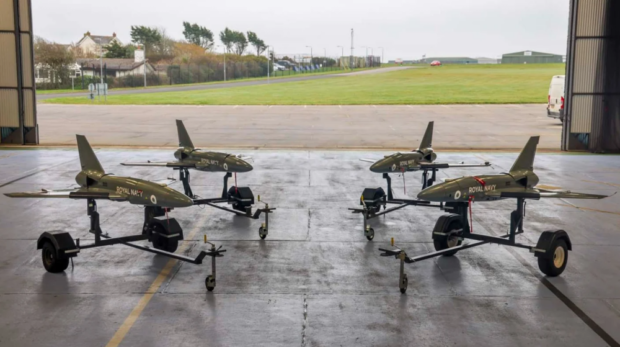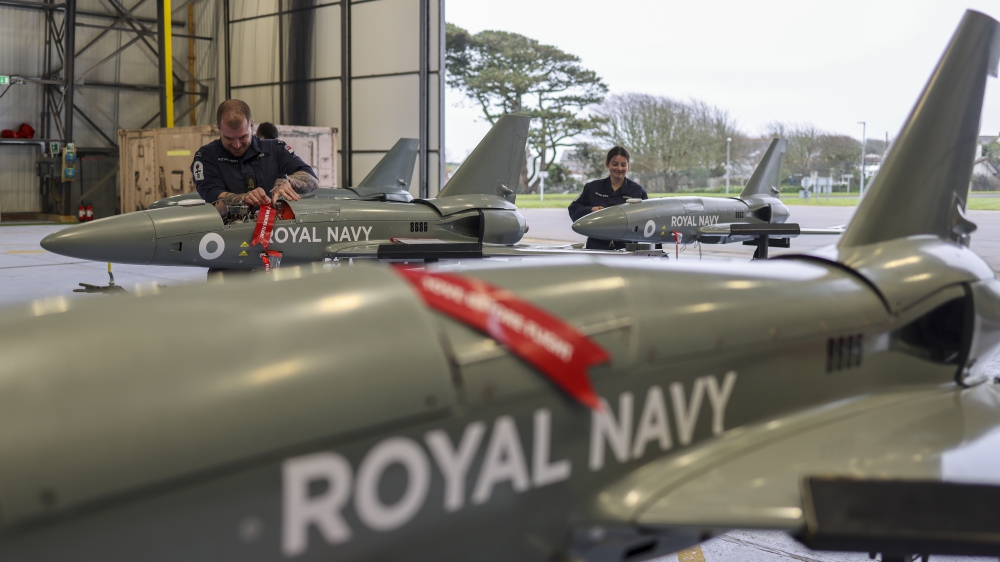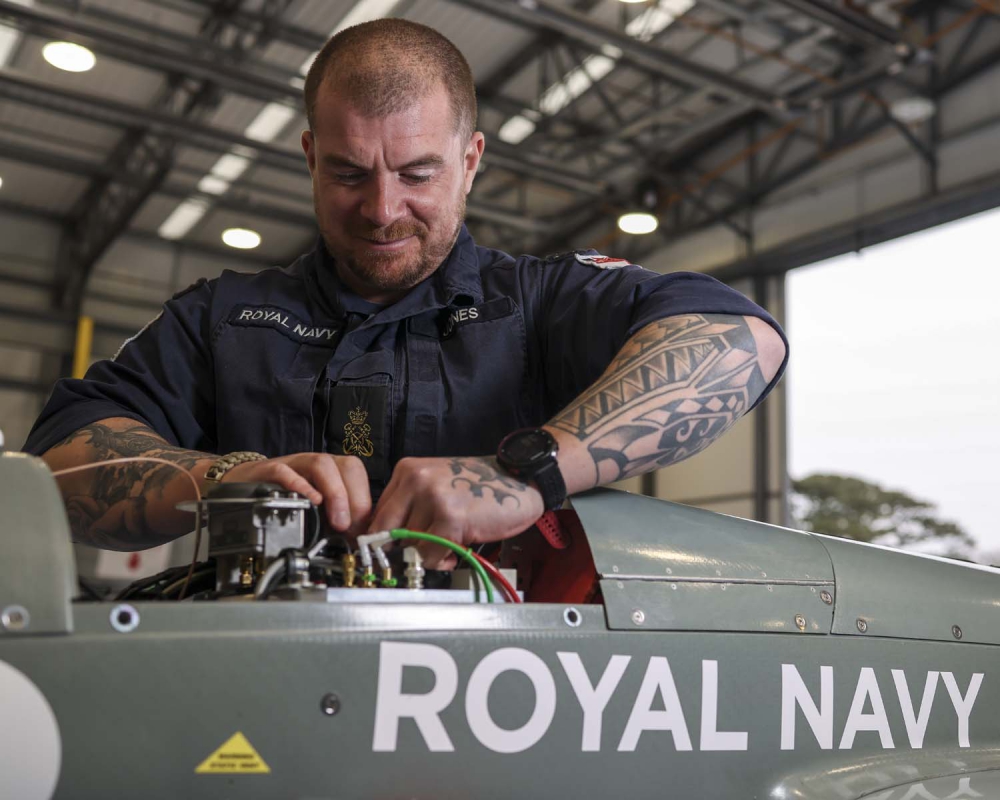The UK Royal Navy has taken delivery of new jet-powered Banshee drones capable of flying up to 400 mph. The adoption of the powerful Banshee Jet 80+ is a significant step forward as the navy forges ahead with the use of remotely-piloted air systems (RPAS).
Developed by defence company QinetiQ, the Banshee simulates threatening aircraft to help the Royal Navy stay at the cutting-edge of air defences. They were first trialled on the aircraft carrier HMS Prince Of Wales in 2021.
Now a new flight has been formed at 700X Naval Air Squadron (NAS), based at Royal Naval Air Station Culdrose, to learn how to maintain and safely operate its own fleet of drones.
Lieutenant Commander Martin Howard, the commanding officer of 700X NAS, said:
“We have already established the use of RPAS on Royal Navy ships on deployment, but the introduction of Banshee signals a revolutionary step forward in terms of technology.”
Originally developed for use as targets to simulate incoming missiles, Lt Cdr Howard said:
“An important point to make is that we are not weaponising these systems. Instead this will be a vehicle that will allow the navy to test different types of sensors.
The most important thing for me is that people are at the heart of this enterprise. In 700X NAS we are building the skills and knowledge of this technology which is key as we move forward.”
The Banshee drones are 10 by 8 feet (approx. 3m x 2.5m) in size and can fly in excess of 400 mph with a range of more than 60 miles. They are propelled into the air using a large 60-foot pneumatic launcher. Using a ground station, the controller can operate the aircraft in various modes and potentially access onboard cameras or other sensors.
Once the flight is complete, the Banshee cuts its engine and deploys a parachute to gently float to the ground.
Lieutenant Tony Nairn was an air engineer and anti-submarine warfare helicopter aircrewman for 17 years before he commissioned as an officer. He is now the Royal Navy’s first Banshee flight commander.
He said:
“One of the challenges of RPAS is the rate at which the technology develops. It’s therefore vital that we are able to change direction quickly, whilst maintaining core principles of operating safely. This is absolutely about adaptability and flexibility.”
He added that his team will learn first how to launch and fly the Banshee safely and then look at how it can be integrated into the same air space as other aircraft and operated at sea.
The commanding officer of RNAS Culdrose, Captain Stuart Urwin said:
“700X NAS not only operates in-service uncrewed systems for the Royal Navy and Royal Marines, it is also a pathfinder squadron, conducting experimentation of these air systems for defence.
They are truly at the vanguard of our Future Maritime Aviation Force. It is enormously exciting to see the rapid progress they’re making. The squadron is a great team working at the forefront of naval aviation’s next big technological leap.”
The navy’s first test flights of Banshee is expected to be held at Predannack Airfield near RNAS Culdrose in the summer.
“In 700X NAS we are building the skills and knowledge of this technology which is key as we move forward.”
Lieutenant Commander Martin Howard



